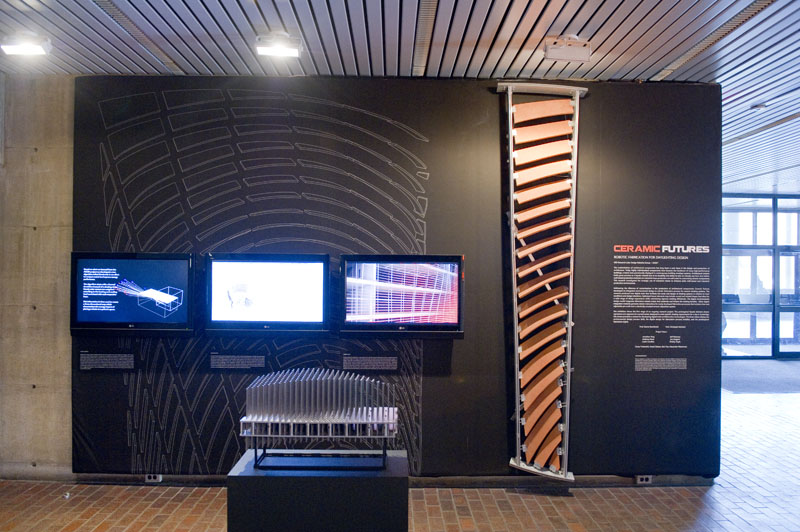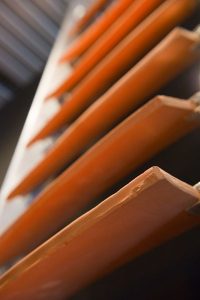Ceramic Futures 1.0: Robotic Fabrication for Daylighting Design

The customization of architectural components has long been a core issue in the design and production of architecture. Today’s environmentally performative buildings rely more than ever on the fabrication of highly individualized components. This trend is most prominent in contemporary building envelope systems. Architectural ceramics, a durable material that can take on virtually any form, may seem like an ideal material for custom façade construction, but current craft-based processes of production lack the ability to integrate into contemporary digital practices. Industrial production methods, on the other hand, are geared towards high-volume production with little ability to efficiently vary ceramic forms.
 Addressing the dilemma of customization in the production of architectural components Ceramic Futures 1.0 developed an integrated design to robotic fabrication process for ceramic shading systems. The research produced new digital tools that facilitate the study of shading geometries in relation to local conditions and design intentions. Optimized louver elements may include curved and twisted shapes that allow for a wide range of design expressions while maintaining rigorous shading efficiencies. The digital environmental design model integrates fabrication-related scripts that subdivide and thicken the shading lamellas. Other digital integration modules generate robotic instructions for newly developed fabrication processes that include a low-cost adjustable pin-mold and a robotically actuated ceramic deposition system.
Addressing the dilemma of customization in the production of architectural components Ceramic Futures 1.0 developed an integrated design to robotic fabrication process for ceramic shading systems. The research produced new digital tools that facilitate the study of shading geometries in relation to local conditions and design intentions. Optimized louver elements may include curved and twisted shapes that allow for a wide range of design expressions while maintaining rigorous shading efficiencies. The digital environmental design model integrates fabrication-related scripts that subdivide and thicken the shading lamellas. Other digital integration modules generate robotic instructions for newly developed fabrication processes that include a low-cost adjustable pin-mold and a robotically actuated ceramic deposition system.
The exhibition shows the first stage of the ongoing research project. The prototypical façade element shown represents one segment of a curved screen design to meet specific shading requirements for a site in Cambridge. The screen provided a context for developing digital tools and fabrication technologies. The three movie displays show the environmental design process (left), the digital design for fabrication process (middle), and the prototypical fabrication (right).
Acknowledgements
We thank ASCER, the Spanish Ceramic Tile Manufacturers’ Association (Castellon, Spain), for their sponsorship of the project. We gratefully acknowledge advice from and access to Prof. David R. Clarke (Harvard School of Engineering and Applied Sciences, Forest Snyder, Kathy King, and Shawn Panepinto (Harvard Ceramic Program), and Javier Mira (Instituto de Technologia Ceramica, Castellon, Spain). Cameron Willard and his team in the GSD Fabrication Lab supported the prototyping efforts in many ways—many thanks! We are grateful for Berohk Koshnevis’ advice for the design of the ceramic deposition system.
GSD Research Labs: Design Robotics Group + GS(D)2
Professor Christoph Reinhart
Project Team: Jonathan King, Anthony Kane, Justin Lavallee, Jeff Niemasz, Jon Sargent, Corey Yurkowich, Ben Tew, Jan Kokol, Alexander Watchman
